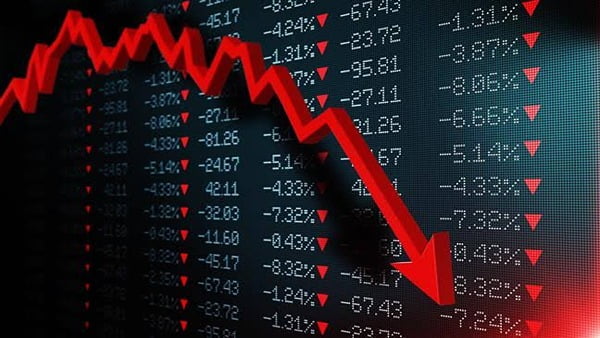Indian stock markets commenced trading on Thursday with losses, reflecting the downward trend seen in global markets. Both the BSE Sensex and NSE Nifty opened lower, as per GIFT Nifty trends projecting a decline of 90 points for the broader index.
At 10 am, the Sensex dropped by 344.40 points or 0.46 per cent to 74,158.50, while the Nifty decreased by 113.60 points or 0.50 per cent to 22,591.10. Among the traded stocks, 1253 shares advanced, 1849 shares declined, and 708 shares remained unchanged.
The previous trading session on Wednesday witnessed the two primary equity benchmarks concluding lower for the fourth consecutive day as investors engaged in profit-booking ahead of the Lok Sabha poll results. The S&P BSE Sensex plummeted by 668 points, closing at 74,503. Conversely, the NSE Nifty50 finished at 22,705, down by 183 points.
In terms of individual stock movements, on the 30-share Sensex platform, Axis Bank, Kotak Bank, SBI, ICICI Bank, and IndusInd Bank were among the top gainers, while Tata Steel, JSW Steel, Power Grid, Nestle, and Titan were among the top losers.
The Indian rupee started trading on Thursday on a lower note. The rupee opened eight paise lower against the US dollar compared to its previous closing rate of 83.34, standing at 83.42 per dollar.
Global markets, particularly in the Asia-Pacific region, continued their downturn on Thursday, echoing the decline seen on Wall Street. Investors awaited crucial economic data from the region set to be released on Friday. The Gift Nifty signaled a negative start to the market.
In the US overnight, all three primary indexes experienced declines as the 10-year Treasury note yield rose for a second consecutive day, surpassing 4.6 per cent. The Dow Jones fell by 1.06 per cent, the S&P 500 decreased by 0.74 per cent, and the Nasdaq Composite slipped by 0.58 per cent, although gains from Nvidia helped alleviate losses for the technology-heavy index. European shares also dropped on Wednesday, with the STOXX 600 index falling by 1.1 per cent to reach a three-week low.
The global market turbulence reflects concerns over rising bond yields, inflation, and uncertainty regarding economic recovery post-pandemic. Investors are closely monitoring economic indicators and geopolitical developments for cues on market direction.
Amidst the volatile market conditions, analysts advise caution and diversified investment strategies to navigate uncertainties and mitigate risks. Additionally, policymakers are expected to closely monitor market developments and take appropriate measures to maintain stability and support economic growth.
Overall, market participants remain vigilant as they assess both domestic and international factors influencing market sentiment and performance. The coming days are crucial as investors await key economic data releases and developments in global financial markets.
